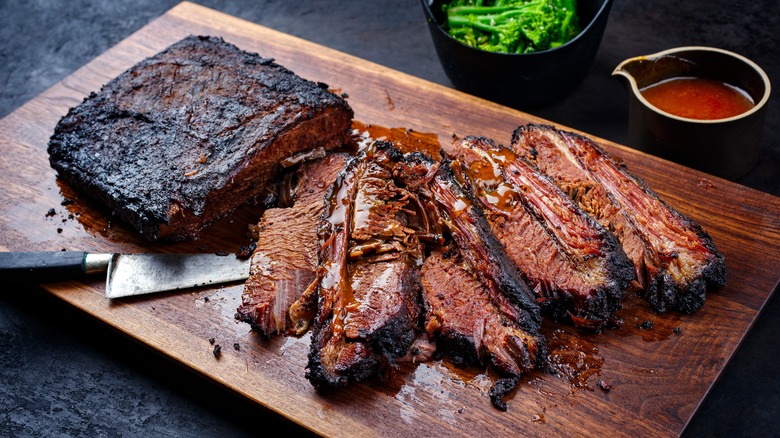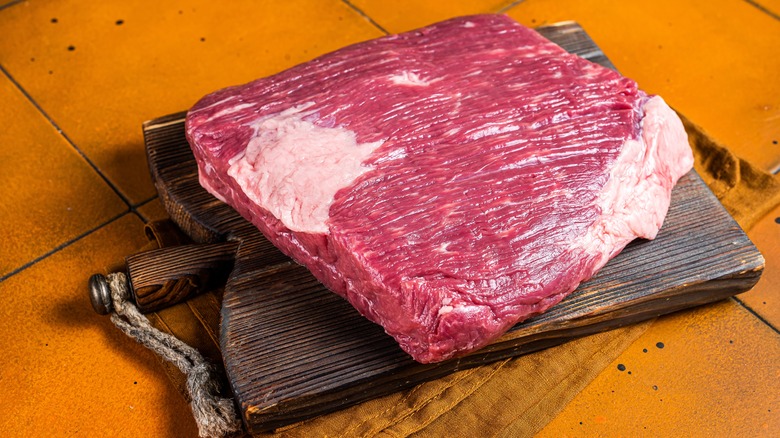The Crucial Mistake You're Probably Making When Smoking Brisket
Smoking a brisket is a big commitment. It takes an entire day of slow cooking to transform a tough cut of meat into something tender and juicy, requiring patience and a bit of skill. While knowing how long to smoke your brisket is essential for achieving delicious results, there are also a few pitfalls to avoid. One common mistake is spritzing the fat while basting. Doing so can cool it down and interrupt the rendering process, affecting the brisket's final tenderness. To ensure the fat renders properly, keep it as hot as possible by avoiding any spray on the fat. This helps the meat reach that melt-in-your-mouth finish.
Spritzing the brisket during the smoking process is a popular technique used to improve flavor and keep the meat from drying out. Many pitmasters use water, apple cider vinegar, or other liquids to keep the surface hydrated, which helps create a flavorful bark as the meat cooks. However, keeping the spritz away from the fat cap is important for that rendering process. To accomplish this, angle your spritzing nozzle to focus on the meat, allowing the fat to do its job without interference. This technique preserves the integrity of the fat while ensuring that the brisket achieves that coveted fork-tender texture.
Fat matters for smoked brisket
Though it has a less-then-stellar reputation, fat is actually good, especially when we're talking about smoked meat. It's a vital ingredient that affects both the flavor and texture of the meat. The fat cap acts as a shield, protecting the brisket from direct heat while gradually rendering down. This is why you shouldn't trim too much of it when you prep the cut. As it melts, the fat locks in moisture and delivers that signature richness. This slow, steady rendering process is key to achieving a tender, succulent result — so you can see why you don't want to interrupt it with a spritz of water that will lower the fat's temperature.
Smoking brisket fat side up or down (or both) has been the subject of ongoing debate. Some argue that smoking fat side up allows the fat to drip down and baste the meat, while others believe that fat side down offers better protection from direct heat. Some even suggest flipping the brisket at least once during cooking for a more balanced approach. There are pros and cons to each method, so it often comes down to trial and error, or choosing what works best for your smoker and cooking style. No matter which method you choose, be sure to let the meat rest after cooking, and don't be surprised if your brisket has a pink hue once finished — it's likely a sign of smoke penetration and the development of the smoke ring.

